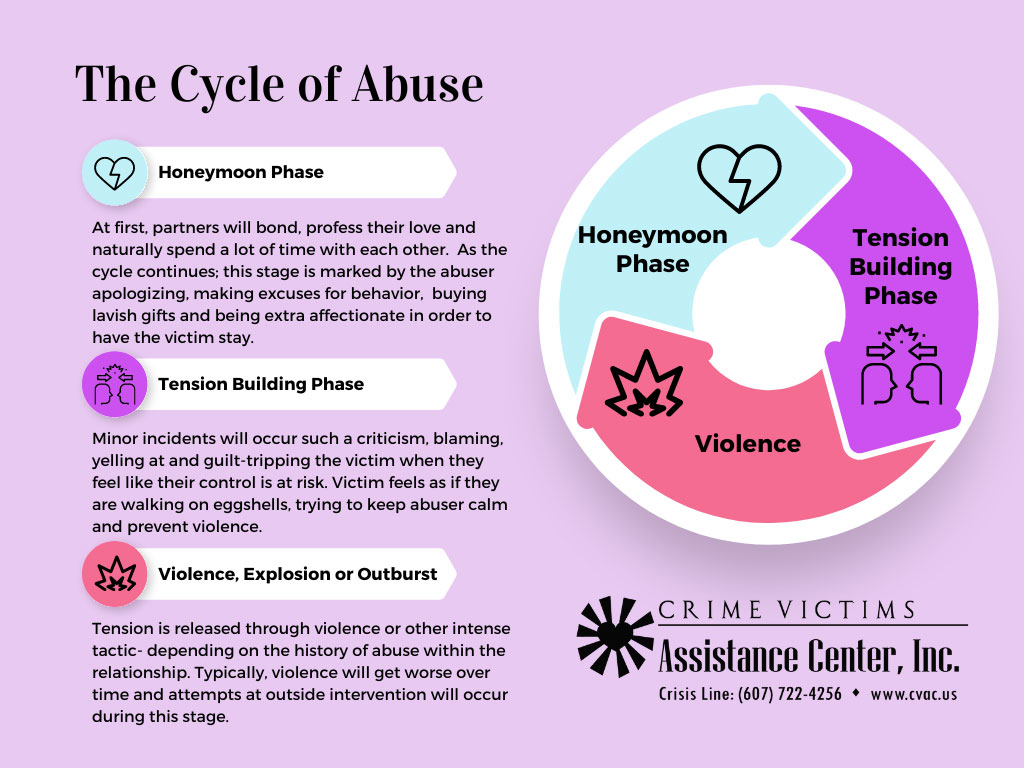Domestic violence is defined as a pattern of behavior used by an individual to establish and maintain power and control over their intimate partner. The behavior includes abusive tactics, threats and actions that may or may not rise to the level of criminal behavior.
Domestic violence can happen to anyone. It looks different in every relationship and no one experiences it in the same way. Although it may look different, there is always an underlying theme of control. When one person tries to control their intimate partner, that isn’t love, it’s abuse. Abuse looks different for everyone. Not every abusive partner uses all of the tactics or uses them in the same way. Abuse may happen slowly and get worse over time. If one partner uses a pattern of behaviors to maintain power and control, that is abuse, even if it is not on this list. Below are a variety of tactics and behaviors that abusers may use:
Physical Abuse: Hitting; Kicking; Punching; Pushing; Biting; Strangling (“choking”).
Emotional & Psychological Abuse: blame, denial and minimization; Name-calling and put-downs; Playing “mind games” (“Gaslighting”); Humiliation.
Cultural Abuse: using victim’s cultural beliefs to coerce them into marriage, pregnancy; inhibiting connection to country of origin; Threatening deportation or immigration status
Financial Abuse: preventing partner from working; Taking partner’s income by giving “allowance”; Restricting access to family finances; Ruining partner’s credit; Controlling resources (gasoline, phone, food, medication).
Exerting Dominance & Privilege: Using partners’ gender identity, sexual orientation, economic status, age, ability, race, cultural identity and any other personal characteristics or protected class status to control them.
Threats, Coercion, Intimidation: using looks, actions or gestures to cause fear; Reproductive Coercion (forced pregnancy or termination of pregnancy, interference with birth control/STD protection; Threatening suicide or homicide.
Sexual Abuse: behaving or speaking to partner in a sexual manner without consent; Making/sharing sexual images without consent; Forced sex labor.
Technological Abuse: controlling and sabotaging a partner’s social media access; Using tracking devices to monitor partner; Sharing partner’s information without consent.
Isolation: controlling access to people and places; Monitoring conversations; Convincing partner that they have no one to turn to.
Spiritual Abuse: Misusing spiritual works to justify abuse; Coercing partner to submit to abuse as a form of obedience.
Stalking: Physically tracking/following victim with intent to cause fear and/or harm; Contacting victim through unwanted phone calls, electronic messages, and third parties.
Using Children & Pets: threatening to harm, kill or seek custody of children or pets; Using legal system to harass and stalk; Using attendance at school and community events to remain connected to the victim.

